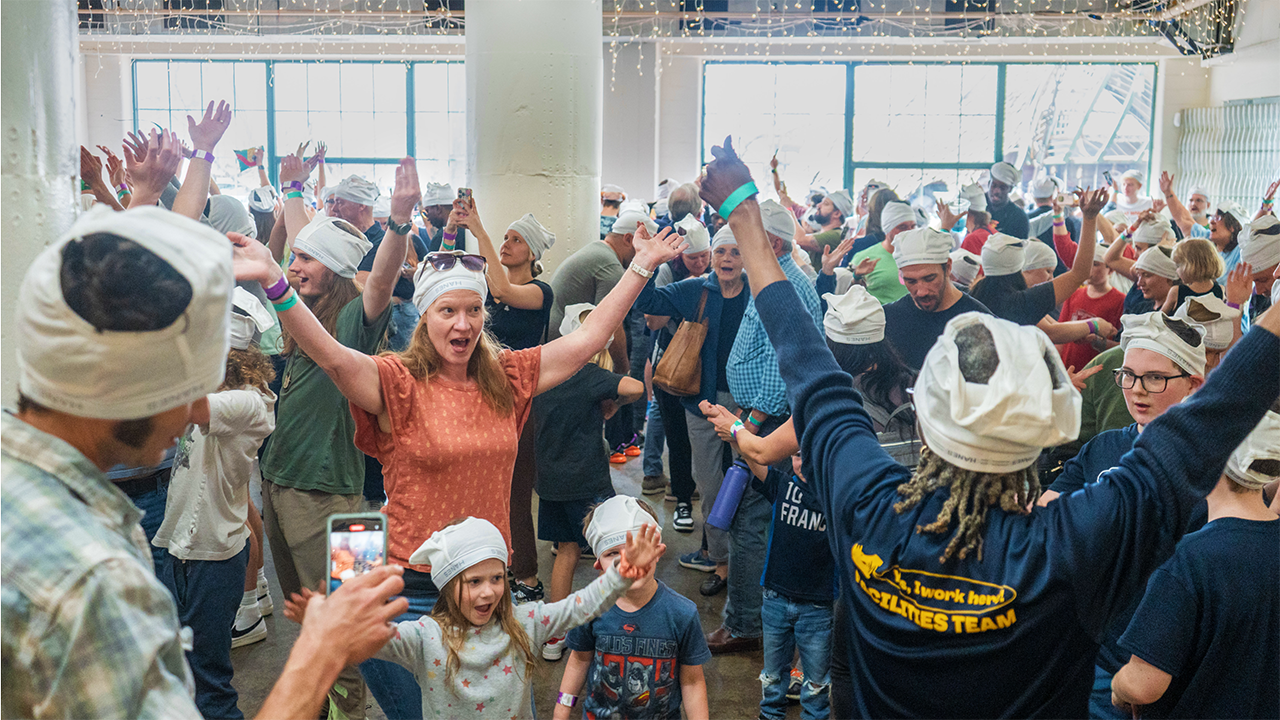Shopping
Is consumer well-being the key to retail’s future?

As consumers grapple with increasing constraints on their resources, the retail industry finds itself at a critical juncture, confronting the question of how experiences can provide more value in these challenging times.
Gen Zers are openly expressing their anxiety and despair over their financial situations on social media, and even trading down has become an expensive proposition. Brands face rising substitutability, but one of their most formidable competitors is consumer avoidance—the decision to simply go without.
The stakes extend beyond merely driving consumer choice; the imperative is to create demand, not just for goods and services but especially for experiences beyond a device screen. Retailers and foodservice brands contend with escalating costs across the board, from goods to transportation, labor, and utilities, and they’re passing these costs along to consumers.
As prices increase, there needs to be an experiential counterweight — the experience must provide additional value or, at the very least, adhere to an experiential “hippocratic oath” to do no harm. Retail faces a perfect storm of experience drawbacks: higher prices, diminished service levels, and a pervasive distrust of cutting-edge AI technologies. Being genuinely customer-centric has never been more challenging. And the asymmetry in service that consumers observe in the marketplace only heightens this difficulty.
Hyper-successful brands can afford to deliver service levels that are disproportionate to the rest of the market, thereby raising expectations across the board. Chick-fil-A sets a high standard with its legion of enthusiastic employees swarming the drive-thru, and fast-food sales-per-store which are three to four times higher than average. Similarly, Apple, with their substantial margins and dedicated employees and fans, provide in-store engagement that’s difficult to replicate elsewhere.
Innovation is imperative, but where should we focus our efforts? What aspects of the customer experience are being overlooked, and what new metrics should we be tracking?
Historically, retail has been primarily focused on financial key performance indicators (KPIs), with every other metric ultimately feeding into financial success—customer satisfaction, retention, frequency, and average check or basket size. While sales will always reign supreme, are there other KPIs we should be considering? KPIs that could offer a fresh perspective on the customer experience and help us determine what experiences must deliver in this challenging new landscape.
Traditionally, retail has played a specific role in the customer journey and the purchase funnel. The assumption is that retail doesn’t need to focus on creating demand, but rather on providing access and closing the sale. Perhaps it’s time to challenge that assumption. Can the experience itself be so compelling that it generates demand?
Consumer Well-Being
We need a fundamental reorientation of how retail creates value if we want to achieve something truly meaningful. And we know it’s possible. It all begins with acknowledging the concept and the potential of consumer well-being.
Research on consumer well- being shows the intricate relationship between consumption habits and individuals’ overall happiness, satisfaction, and quality of life. Key findings from these studies illuminate how the experience itself could add value. Economists such as Richard Easterlin reveal how beyond a certain income threshold, an increase in wealth does not lead to a corresponding increase in happiness. Even more so, excessive materialism is often associated with negative outcomes like stress, anxiety, and lower life satisfaction. Retail must acknowledge this and focus on merchandising ideas, not just things — turning this into a recurring revenue stream that’s a hybrid of products and lifestyle enhancements.
Research suggests that spending money on experiences, such as travel, dining out, or attending events tends to yield greater happiness and satisfaction compared to material purchases. Experiential consumption fosters positive emotions, social connections, and lasting memories that contribute to overall well-being.
This raises the question: how much of the retail space can be repurposed for events or knowledge transfer? When customers feel understood, valued, and cared for, they are more likely to develop a positive emotional connection with the brand. Empathetic customer service and human-centered design solutions allow businesses to create memorable experiences that leave a lasting impression on customers. This can result in increased customer loyalty and advocacy. Physical retail offers opportunities to deliver empathy face-to-face, increasing the value of experiences over purely digital or robotic exchanges.
Financial management and consumer decision-making have significant implications for Individuals’ financial well-being and overall life satisfaction. According to money coach Rachel Peavy, the importance of budgeting, saving, and mindful spending habits promotes financial security and peace of mind. Retailers need to manage a range of propositions that focus on overall life satisfaction versus maximizing each visit.
Certain consumer groups, such as children, the elderly, and those with limited financial resources, may be more vulnerable to the negative consequences of consumption. Understanding the unique challenges faced by vulnerable consumers is essential for promoting equitable access to resources and improving overall well-being. Designing merchandise lines that focus on maximizing resources and tailored experiences are potential innovation territories here.
Design Decisions
Making design decisions that are informed by a rich understanding of your customers’ wants, needs, and desires is a key aspect of respecting their well-being. According a 2019 report in the Journal of Business Research, store environment congruity (the fit between store attributes and shoppers’ self-image) is a key driver of shoppers’ emotional attachment to the store. Shoppers who feel a stronger emotional attachment are more likely to have positive patronage intentions, such as revisiting the store, recommending it to others, and spending more time and money there.
Designing experiences oriented toward consumer well-being is smart. While customer feelings of well-being may be related to Net Promoter Score in some ways, the direct correlation between the two has not yet been conclusively demonstrated by research. NPS is a valuable metric, but also has limitations in fully capturing the multifaceted nature of customer well-being.
And there is a need to consider a broader set of customer experience metrics and insights. But the smart play is to explore the potential value creation around consumer well-being now. By doing so, retailers can become stronger, more resilient, and better equipped to meet the evolving needs and aspirations of consumers in the years to come.
The path forward is clear: By focusing on consumer well-being and the experiential dimensions that truly matter, retailers can unlock new sources of value, foster deeper connections with customers, and thrive in an increasingly competitive landscape.









